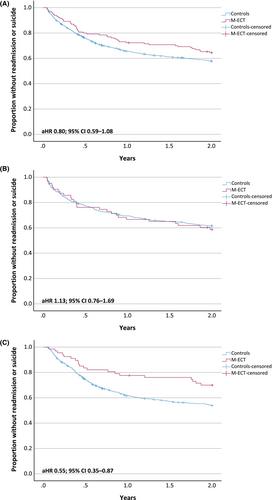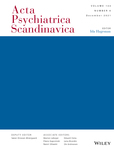To determine whether the rates of readmissions and suicide vary in psychotic unipolar depression based on whether patients receive maintenance electroconvulsive therapy (M-ECT) following the initial series of ECT, and to examine if there is an age-dependent association.
We used Swedish national registries to identify hospitalized patients with psychotic unipolar depression, treated 2008–2019 who received ECT during their hospital stay. The patients who received subsequent M-ECT within 14 days after discharge were compared with those who did not. The primary composite outcome was time to readmission due to a psychiatric disorder, suicide attempt, or suicide within 2 years from discharge. Data were analyzed using Cox regression adjusted for previous psychiatric admissions, age, sex, comorbidity, and pharmacological treatment. We also conducted a within-individual analysis using the sign-test, with patients having ≥1 hospital episode followed by M-ECT and ≥1 hospital episode without M-ECT.
A total of 1873 patients were included, of which 130 received M-ECT. There was no statistically significant group difference regarding the primary outcome in the whole sample. However, when stratified by age, there was a significant difference in favor of M-ECT for patients >65 years (adjusted hazard ratio 0.55, 95% confidence interval 0.35–0.87). The within-individual analysis, including 46 patients, significantly favored M-ECT.
M-ECT was not associated with a differential risk of the composite of readmission and suicide in psychotic depression. Among patients >65 years, M-ECT was significantly associated with a decreased risk of the outcome. The possibility of residual confounding cannot be excluded.



